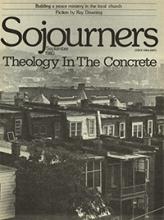This article, like the one which precedes it, was excerpted from a talk given at the SCUPE congress. When this article appeared, Stan Hallett lectured at Northwestern University and Garrett Evangelical Seminary in ethics and urban affairs. He was a vice president of the South Shore National. Bank, which seeks to invest in and rebuild the surrounding community. He taught Dynamics and Development of the Modern Industrial, City for SCUPE.--The Editors
City watching these days is like looking into a kaleidoscope that is beginning to spin, the colors blurring. Too much is changing too fast, and we experience the vertigo that comes from not knowing how and where to fix our eyes and balance our inner ears.
We need to understand these changes. Our situation is analogous to the investigations into the earth's structure in the early 1950s. The Oceanographic Institute outfitted a ship with sonar to take soundings of the ocean depths. The ship discovered that the ocean isn't a big bathtub. Instead, there are huge expanses that are flatter than the Salt Flats of Utah, crevices deeper than the Grand Canyon, and mountains that rise higher than the Himalayas, all buried underneath the surface of the ocean.
Read the Full Article

